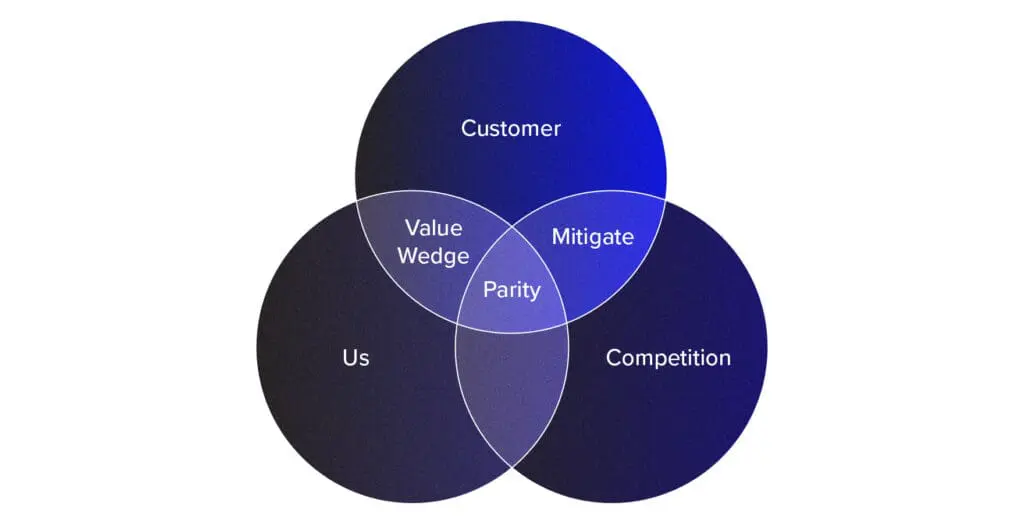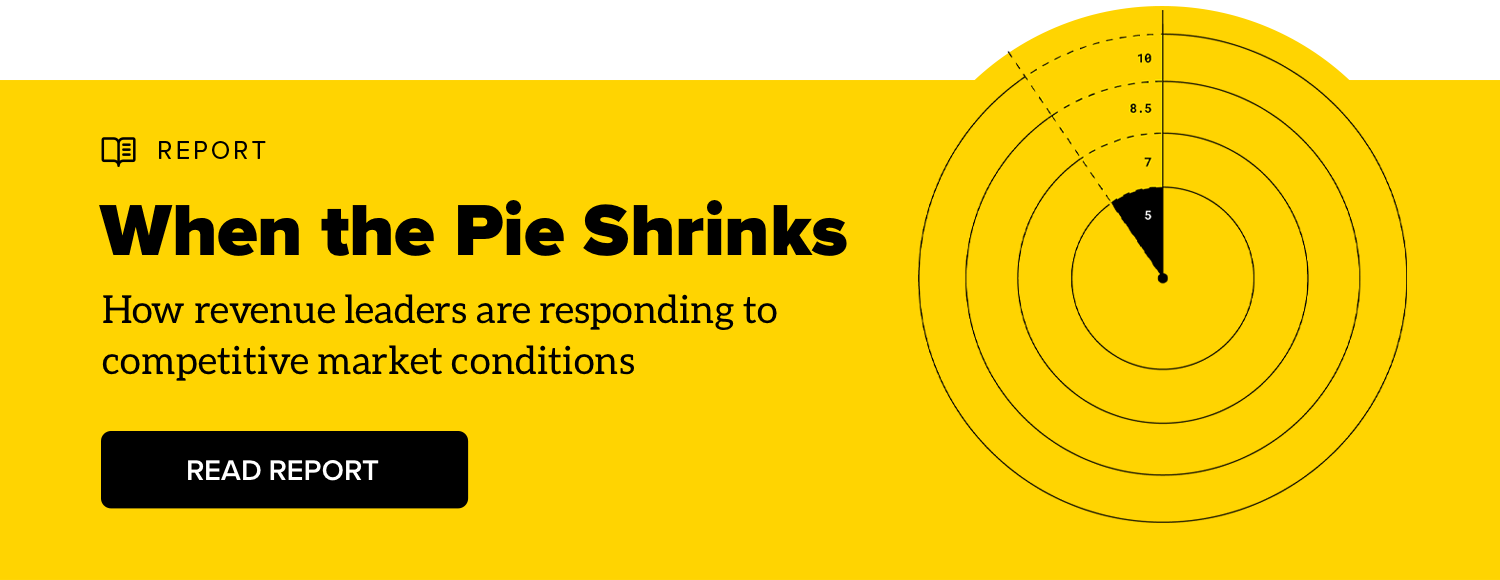Klue Compete
The Competitive Enablement Platform
Learn More
FIND OUT MORE >

It usually only takes two to tango — you and your buyer.
But 91% of revenue leaders say that their deals have become more competitive this year, which means there’s another dance partner on the floor: your competitors.
If you want your reps and business to hit targets this year, then it’s time to elevate their competitive selling skills.
One of the best frameworks to help you do so?
The value wedge.
In this article, we’ll dive into what a value wedge is, and how you can use it in the sales cycle to win more deals over your competitors.
Think of a Venn diagram with three bubbles:


Where you and your competitor overlap is product parity. Selling in these areas is the grey zone where you have little control to differentiate from your competitors.
Where your competitor’s capabilities and the prospect’s needs overlap are their unique differentiators. Also known as the ‘no-go zone’ (which is just as important to know as the areas you want to double down on!).
But where your capabilities overlap with the prospect’s needs is where you’ll find the ammo to drive home the value wedge.


If they haven’t already, your Compete team should identify the seven to ten unique differentiators you have against your competitor set based on the competitive insights they’ve generated.
This is the menu your reps are going to choose from when it comes time put the value wedge into action.
But, as Klue AE Qayam Noorani puts it, you have to be selective about which differentiators to highlight.
“I like to have seven to ten unique differentiators at a high level that I can pick from based on what’s important to my prospect. You want to have two to three value points that are really important to your prospect that you again just drive home in every single conversation.”
Tailoring those unique differentiators to your prospect’s needs, and reinforcing them over and over, again will make them more memorable.
It will get the prospect to engage in the conversation more. Eliciting more questions, and giving you more opportunities to bring it all back to the value wedge.
Your prospect is eager to kick-off with a project management tool — but they’re overwhelmed and don’t know where to start.
Fortunately, one of your capabilities is a comprehensive onboarding process, coupled with your lightning-quick time-to-value. Your competitors? Not so much.
You’ve got yourself some value to wedge.
Whenever possible, tie everything back to your prospect’s initial objection: feeling overwhelmed. And the solution you have for their objection.
But finding your value wedge requires one key component from your reps…
Listening deeply to your buyer during the discovery process.
Reps should be mapping their value wedges for the deal as early as the discovery process. Doing so requires listening intently to what matters most to your prospect, and a solid grasp of why you win and lose against competitors.
The more you bring it all back to the buyers’ initial objections, concerns, the more the buyer feels heard and is likely to open up.
The more THEY talk about their concern, and the more YOU bring up the unique differentiator, the more likely it sticks in their mind.
And if you do it all correctly, the more likely you are to seal the deal.
Watch Klue AE Qayam Noorani and LeadIQ’s Mitch Comstock break down what it takes to get sellers and PMMs together to close more deals 👇
Knock your competitors out of a deal quicker, and you’re far more likely to close what’s in your current pipeline.
But getting them out of the deal is the tough part.
Learn what else 300+ other revenue leaders are doing to avoid revenue slipping through the cracks to competitors in our brand new report ‘When the Pie Shrinks’.
And if you’re looking for better battlecards that help your sellers close more against the competition, then download all of our free templates here.




Competitive Enablement
Product marketers conducting competitive research are drowning in reviews, reports, and messy notes. Here's how Klue's AI foundation will help you complete this analysis in seconds, not weeks.


Competitive Enablement
The topic of Large Language Models (LLMs) has a lot of confusion. Here's what you need to know about how Klue is working with them.


Let’s do it. Tell us a bit about yourself and we’ll set up a time to wow you.
Let's do it. Tell us a bit about yourself and we'll set up a time to wow you.
XLet's do it. Tell us a bit about yourself and we'll set up a time to wow you.
XSubscribe to get our latest AI functionality and news in your inbox.
XOur Buyer Pulse feature, set to launch in Q2 2024, offers valuable insights into the factors influencing buyer decisions in your pipeline. By signing up for the waitlist, we can better gauge interest and proactively engage with you to streamline the setup and integration process before the feature becomes widely available.
X